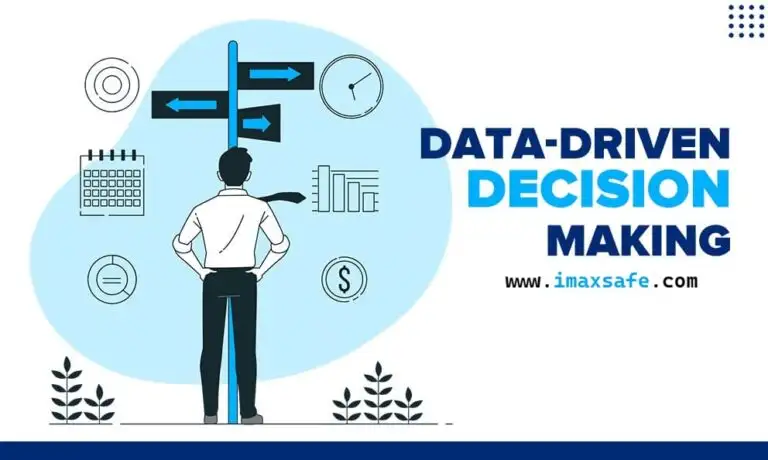Strategic Planning : Business Development GUIDE
Strategic Planning is key to successful business development. If you plunge forward without clearly defining your goals and how you’ll meet them, you run the risk of misplacing your energy and failing to make the kind of progress you envisioned. In this course, Max Safe shares how to use strategic planning to work smarter as you develop your business.
First, Max Safe explains the purpose and power of a strategic plan, the foundational skills you need to develop, and how to build your strategic planning team. Then, learn how to clearly define your vision and long-term goals, how to implement and manage your plan, and assess the progress that you’re making (or not making) towards your goals. Plus, Max Safe illustrates five mistakes often made in strategic planning in business development.
The Impact of Business Development Strategic Planning:
- Why It’s Important: Having a strategic planning for business development helps you grow your business in a structured way. Without it, you might waste time and resources, leading to stress and inconsistent results.
- Personal Experience: The instructor shared a personal story about how, without a plan, she struggled to grow her business. Once she created a strategic plan, her business doubled in size within two years.
- Benefits of a Strategic Plan:
- Peace of Mind: Knowing you have a plan helps you sleep better and reduces stress.
- Consistent Results: A plan helps you predict sales, revenues, and expenses more accurately.
- Confidence: With a clear plan, you feel more confident to take risks and invest in new ideas.
- Talent Development: It’s easier to hire and retain good employees when you have a clear direction.
- Competitive Advantage: A strong plan helps you understand how to compete and succeed in your market.
In essence, having a strategic planning for business development means you can grow your business more effectively and with less stress.
The impact of business development strategic planning
Vision
- What It Is: Your vision is a declaration of where you see yourself or your business in the future. It’s meant to drive and motivate you.
- Purpose: It gives you a clear direction and helps you stay focused on your long-term goals.
- Example: “Our vision is to be the market leader in our industry” or “Our vision is to help our customers achieve a lifetime of success.”
Mission
- What It Is: Your mission statement outlines how you will accomplish your vision. It includes the strategies and actions you’ll take.
- Purpose: It provides a roadmap for achieving your vision, detailing the specific steps and methods you’ll use.
- Example: If your vision is to help customers achieve success, your mission might be “We will help our customers create strong financial and retirement plans.”
Values
- What They Are: Your values are the principles and standards that guide your actions and decisions. They tell your customers who you are and what you stand for.
- Purpose: Values help build trust with your customers by setting clear expectations about how you will conduct business.
- Example: Values might include commitments like “We promise to always act with integrity” or “We are dedicated to providing excellent customer service.”
How to Create Them
- Think About Your Customers: Consider what difference you want to make in their lives and in your industry.
- Answer Key Questions:
- Where do I see myself in the next two to three years?
- What impact do I want to have made?
- How will I achieve this impact?
- What services or products will I provide?
- What promises will I make to myself and my customers?
- What can my customers count on me for?
By having a clear vision, mission, and values, you not only make your business more purposeful and motivating but also make it easier for the right customers to find and trust you.
Skills for developing a business development strategic planning
Let’s break down the skills needed for developing a business development strategic planning in simple terms:
Key Skills:
- Communication Skills:
- What It Means: Being good at talking and, more importantly, listening.
- Why It’s Important: You need to gather ideas and feedback from your team, customers, and competitors to build a solid plan.
- Business Acumen:
- What It Means: Understanding how your business works and how to turn ideas into actions.
- Why It’s Important: You should know how your products are made, how pricing works, and how your company makes money.
- Strategic Thinking:
- What It Means: Planning for the future and making decisions that help your business grow.
- Why It’s Important: Your plan needs to work for current goals and adapt to changes in the market.
- Agility:
- What It Means: Being flexible and able to handle unexpected changes.
- Why It’s Important: Plans don’t always go as expected, so you need to adapt quickly.
- Market Research:
- What It Means: Knowing your competition, customers, and market trends.
- Why It’s Important: The more you know, the better your plan will be.
- Networking:
- What It Means: Building relationships with people inside and outside your company.
- Why It’s Important: Strong connections support your strategic plan and help it succeed.
How to Develop These Skills:
- Take Courses: Like the one you’re doing now on LinkedIn Learning.
- Get a Mentor: Find experts who can guide you.
- Build a Team: Surround yourself with people who have these skills.
By focusing on these skills, you’ll be well-equipped to create a strong business development strategic plan.
Design the team to build a business development strategic planning
Building Your Team:
- Leader:
- Role: The main person in charge. They recruit the team, keep everyone focused, and make sure the plan is created and followed.
- Qualities: Passionate about business development, experienced, and able to motivate others.
- Sales Professional:
- Role: Engages with customers and sells products.
- Purpose: Provides real-world insights on how the plan is working with customers.
- Marketing Representative:
- Role: Focuses on branding, market reputation, and lead generation.
- Purpose: Offers a perspective on how to attract and retain customers.
- Product Development:
- Role: Expert in designing and developing products.
- Purpose: Ensures the plan covers updates to current products and development of new ones.
- Sales Enablement:
- Role: Supports sales professionals with customer service and sales technology.
- Purpose: Helps sales teams work more effectively.
- Finance:
- Role: Understands the budget and financial goals.
- Purpose: Provides insights into financial planning and resource allocation.
- Human Resources:
- Role: Knows the current talent and skill gaps.
- Purpose: Supports training and recruitment needs.
Key Points:
- Diverse Team: Even if you can’t fill every role, having a diverse team with the right skills is crucial.
- Clear Roles: Define each team member’s role clearly.
- Strong Leadership: A good leader will guide and focus the team effectively.
By assembling the right team, you can create a strong and effective business development strategic plan.
You Need Also Check This How To Enhance your LinkedIn Profile In 10 Minutes
Tools to develop the business development strategic planning
Why Tools Are Important:
- Purpose: Tools help you get organized, stay focused, and make better decisions.
- Categories: There are three main categories of tools: Strategic Direction Tools, Communication Tools, and Resource Tools.
1. Strategic Direction Tools:
These tools help you understand where you are, where you need to go, and what external factors might impact your plan.
- FEES (Future External Environmental Scan):
- Purpose: Helps you think about changes outside your organization that could be threats or opportunities.
- SWOT (Strengths, Weaknesses, Opportunities, Threats):
- Purpose: Helps you understand your current state by analyzing your strengths, weaknesses, opportunities, and threats.
- Seeds, Weeds, and Needs:
- Purpose:
- Seeds: What’s working well.
- Weeds: What’s not working.
- Needs: What you need to add or improve.
- Purpose:
2. Communication Tools:
These tools help your team communicate effectively and stay focused on priorities.
- CRM (Customer Relationship Management System):
- Purpose: Provides data on growth opportunities with existing customers and prospects.
- Project Management System:
- Purpose: Keeps the team updated on progress and creates accountability.
- Video Conferencing:
- Purpose: Enables effective meetings, especially when team members are not in the same location.
3. Resource Tools:
These tools help you make informed and quick decisions.
- Financial and Sales Forecasting Tools:
- Purpose: Understand the financial impact of your business development strategies.
- Market Research Tools:
- Purpose: Provide real-time data for decision-making, including analytics, competitive analysis, and market projections.
- Industry-Specific Tools:
- Purpose: Offer insights and trends specific to your industry, often available from trade associations.
How to Use These Tools:
- Select Wisely: You don’t need all the tools; choose the ones that best fit your needs.
- Exercise File: For a full list of tools, refer to the exercise file that accompanies the video.
By using these tools, you’ll be more efficient and create a more solid business development strategic planning.






